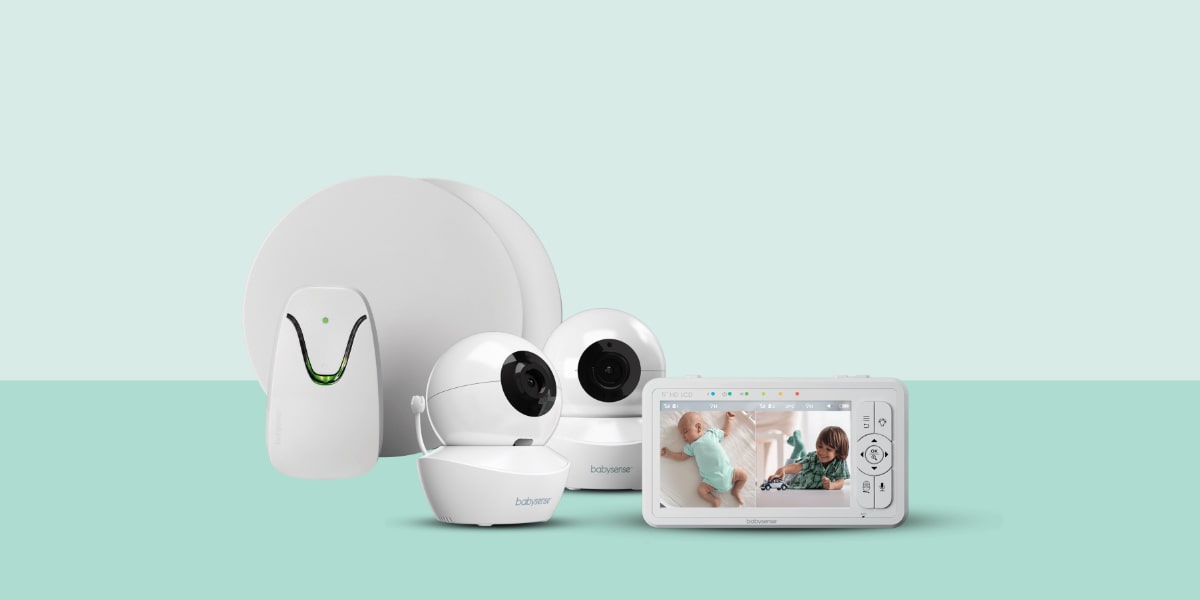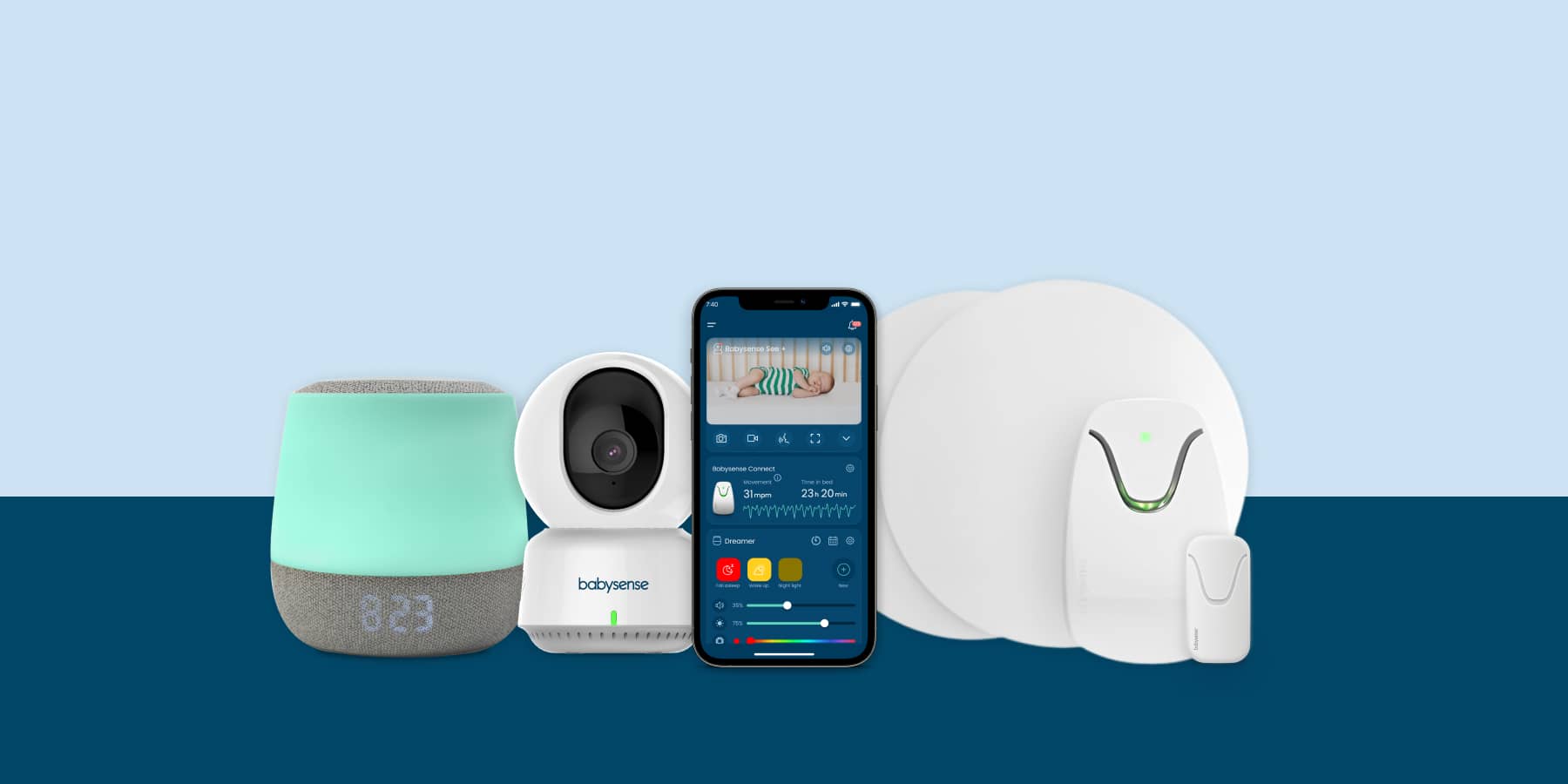As a new parent, ensuring your baby sleeps safely and creating the perfect sleep environment for your baby is crucial. Did you know that the room temperature can make a significant difference in how well your baby sleeps? In this guide, we will explore the importance of room temperature for your baby's sleep, the ideal temperature range, how to monitor and regulate the temperature, tips for dressing your baby for the night, and answers to common questions that new parents may have. Let's dive in and make your baby's room the coziest place for sweet dreams!
Why Room Temperature Matters for your baby’s sleep
Understanding the significance of the room temperature for your baby's sleep is a game-changer for new parents aiming to ensure the utmost comfort and safety for their little ones. Unlike adults, babies have a unique sensitivity to temperature variations, which can significantly influence their sleep quality and overall safety. Babies are more sensitive to temperature changes than adults. An environment that is too hot raises concerns about overheating, which has been linked to an increased risk of Sudden Infant Death Syndrome (SIDS), a topic that understandably weighs heavily on the minds of parents. Conversely, a room that's too cold can lead to discomfort and disturbances in your baby's sleep patterns, potentially impacting their health and development.
"Parents lose 133 nights of sleep during the first year of their baby's life!" (Sleep Review Mag)
Finding that "just right" temperature range not only promotes a safer sleep environment but also supports uninterrupted, quality sleep. This is crucial for the developmental milestones your baby will reach, as well as for the well-being and rest of the whole family. When the room temperature is maintained within the recommended range, your baby can sleep more soundly, reducing the likelihood of wakefulness due to discomfort. This careful balance aids in nurturing a sleep setting that is both secure and conducive to healthy, restful sleep patterns for your infant.
The world of new parenthood comes with its challenges, but understanding the critical role of room temperature in your baby's sleep environment arms you with the knowledge to create a nurturing, optimal space for your little one's slumber.
Discovering the Ideal Room Temperature for Your Baby
It's important to regularly check the room temperature, especially during the night when temperatures can drop or rise unexpectedly.
Navigating the journey of parenthood means paying attention to a host of small details. One of these details is ensuring the room where your baby sleeps is set to an optimal temperature range. Experts recommend keeping your baby's room between 68°F and 72°F (20°C to 22°C), the perfect balance for offering a cozy haven for your little one to drift off into dreamland safely and comfortably.
It's important to regularly check the room temperature, especially during the night when temperatures can drop or rise unexpectedly.
But how can you keep a steady eye on this, you may wonder? A baby monitor equipped with a temperature sensor is an invaluable ally in this quest. |It not only allows you to continuously monitor the temperature but also alerts you if adjustments need to be made, ensuring the environment remains ideally suited for your baby's restful sleep.
Remember, while maintaining the recommended temperature is key, achieving it can vary based on your home and the season. It might involve using a fan or opening a window slightly during warmer months, or ensuring the room is adequately insulated during cooler times.
How to Monitor Your Baby’s Room Temperature
Ensuring your baby's room maintains the perfect temperature is similar to performing a delicate balancing act. However, with a few easy-to-follow strategies, this task becomes less daunting and more of a part of your daily routine.
- Use a Baby Monitor with Temperature Sensor: Modern baby monitors often come equipped with a built-in temperature sensor. This nifty device is a game-changer when it comes to parenting. This feature allows you to keep an eye on the room's temperature from another room so that you don’t have to physically check. If the temperature falls outside the safe range, some monitors will alert you, ensuring you can make adjustments as needed.
- Install a Room Thermometer: Placing a simple room thermometer in the baby's nursery is an inexpensive way to monitor the temperature. Make sure it's placed at the same height as the crib to get an accurate reading of where your baby sleeps.
- Smart Thermostats: If you have a smart thermostat, you can set it to maintain a consistent temperature in your baby's room. Many smart thermostats can be controlled via smartphone apps, making it easy to adjust the temperature without entering the nursery and possibly waking your baby.
Tips to Regulate Room Temperature
When it comes to adjusting the room temperature, think simple and safe.
- Dress Your Baby Appropriately: The clothing you choose for your baby plays a significant role in regulating their body temperature. A good rule of thumb is to dress your baby in one more layer than you would wear to be comfortable in the same environment. Choosing the right pajamas for your little dreamer can feel like a puzzle, but it's quite manageable once you know the basics. The key is to dress your baby in a way that complements the temperature of their room, ensuring they're neither too hot nor too cold as they snooze. Start with a simple, breathable base, like a cotton onesie, which is ideal for most climates. This single layer often suffices, especially if your baby's room is within the recommended temperature range of 68°F to 72°F.
- Use Fans or Air Conditioning: During warmer months, use a fan or air conditioning to keep the room cool. Ensure that the fan is not blowing directly on your baby but helps circulate the air.
- Heaters and Humidifiers: In colder weather, you might need a heater to maintain a comfortable room temperature. Be cautious with space heaters; they should have an automatic shut-off feature and be placed far away from the crib. A humidifier can also be helpful in maintaining air moisture levels, especially during the winter when heating systems can dry out the air.
Common Questions About Baby's Room Temperature
Navigating the early stages of parenthood comes with a bundle of questions, especially regarding creating a cozy, safe sleep environment for your baby. Here are some of the common queries new parents have, along with insights to guide you through:
Q: How do I know if my baby is too hot or too cold?
A: Check the back of your baby's neck or their tummy. These areas give a good indication of their core temperature. If these areas feel hot or sweaty, your baby may be too warm. If they feel cool to the touch, your baby might be too cold. Additionally, signs of overheating include flushed cheeks, rapid breathing, and restlessness.
Q: Can I use a blanket in the crib to keep my baby warm?
A: It's best to avoid loose blankets in the crib for infants under one year old, as they can pose a suffocation hazard. Instead, use a sleep sack or wearable blanket designed for babies. These provide warmth without the risks associated with loose bedding. (Link to blog: When Can Your Baby Sleep with a Blanket?)
Q: What should I do if the temperature drops significantly at night?
A: If you anticipate significant temperature drops at night, look for safe ways to maintain warmth, such as appropriate dressing or using a room-specific heating system with a reliable thermostat. This way, you ensure a safer environment that's evenly heated.
Conclusion
Maintaining the perfect room temperature for your baby is essential for their comfort and safety. By keeping the room between 68°F and 72°F (20°C to 22°C), using appropriate clothing, and monitoring the temperature with reliable tools, you can ensure your baby has a safe and restful sleep environment. Remember to check the room temperature regularly and make adjustments as needed, especially during seasonal changes.
Remember, your instincts, combined with a few key pieces of knowledge, will make you an expert in your baby’s comfort in no time!






